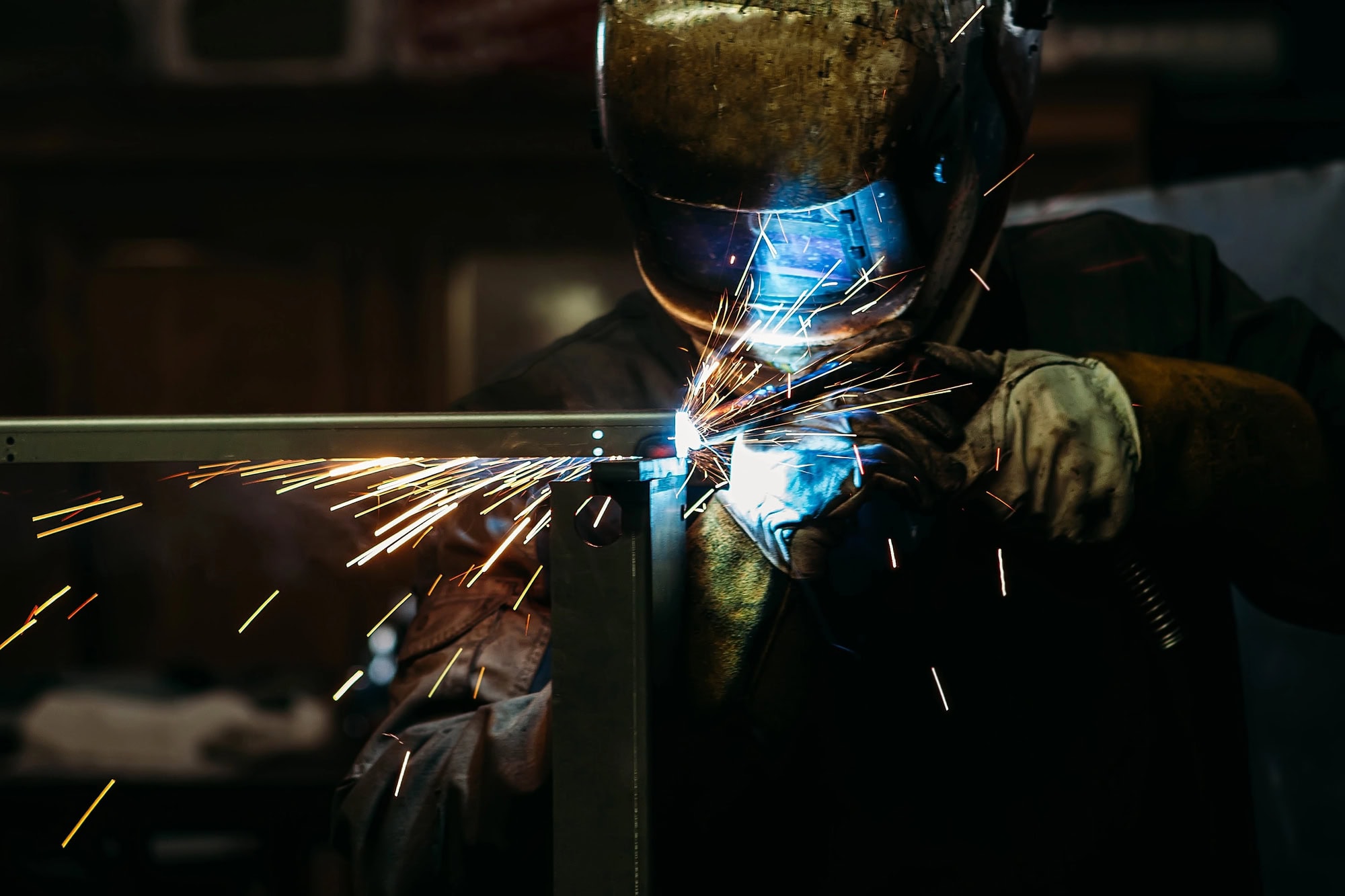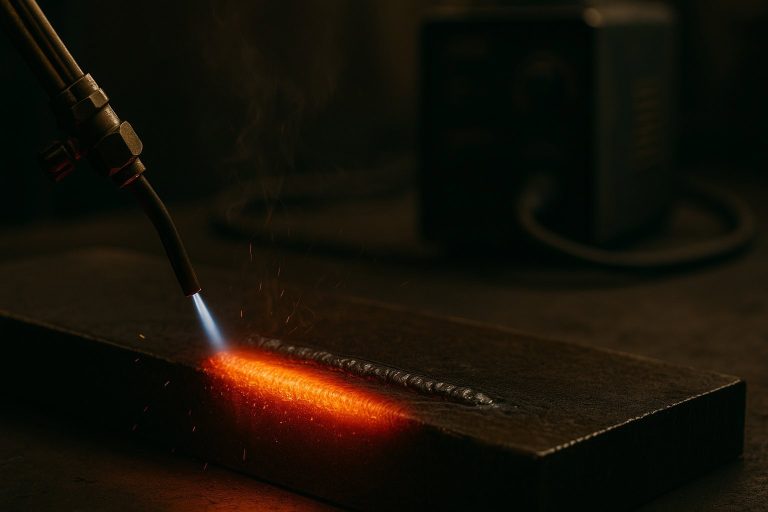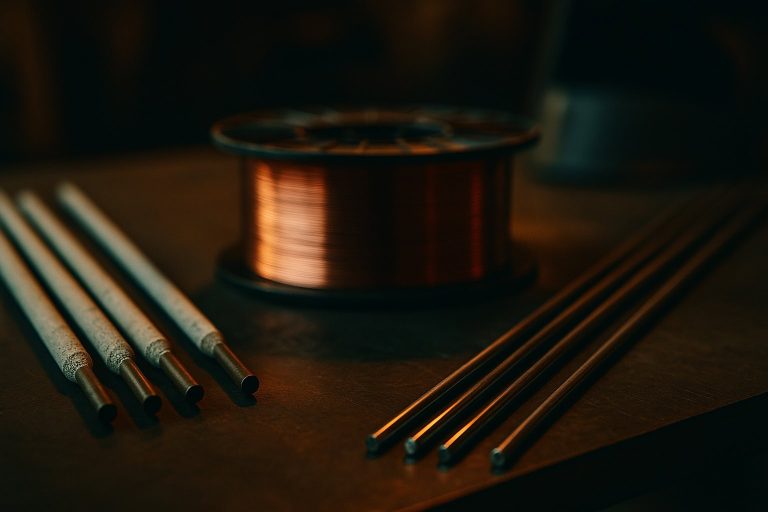How Does a Welding Machine Work? Everything You Need to Know
March 5, 2021

If you’re new to the world of welding, or you just want more information about how arc welding works, you’re in the right place. In this blog from Vern Lewis Welding Supply, we’ll discuss the basics of arc welding and how a welding machine works – so that you can understand the fundamentals of the process. Read on and learn everything you need to know about modern welding technology.
Understanding the Basics of Arc Welding
Arc welding is not the only type of welding. In torch welding, for example, a high-powered torch is used to melt the workpiece and a metal welding rod to join the metals together. But this is a relatively uncommon type of welding technology today.
However, arc welding is, by far, the most common type of welding, so that’s what we’ll talk about in this guide. The basics are simple. Arc welding technology uses a high-powered electrical “arc” to melt a metal workpiece that’s grounded to the welding machine, and an electrode that’s also attached to the welding machine.
Electrical arcing occurs when electric current “jumps” and flows through the air between two conductors. In this case, that’s the metal workpiece and the electrode, both of which have a strong electrical current fed to them through the welding machine.
This arc heats the metal to an extremely high temperature, melting both the electrode and the metal it’s touching, creating a weld pool that allows the two metals to be joined. Let’s take a deeper look at this process and how an arc welding machine works now.
How an Arc Welding Machine Works – Step-By-Step
Ready to dive into the details? Here’s a step-by-step guide to how an arc welding machine works.
1. Setting up the machine – To begin, the welding machine must be set up. Various controls can be used to change the power of the machine and how it operates. It’s important to read the manual provided by the manufacturer thoroughly to set up an arc welder properly.
2. Grounding the welding material – Once the welder is ready to begin the welding process, they will attach a ground clamp to the metal workpiece. This attaches directly to the welding machine. This is essential because it helps complete the electrical circuit that will create the arc, which is used to join the two pieces of metal together.
3. Placing an electrode lead against the welding material – When the welder is ready to begin the welding process, they will place a highly-conductive electrode against the welding material and activate the machine to send electrical current through the workpiece. The electrode may be a stick electrode or a piece of wire fed through a welding “gun” depending on the type of arc welding being performed.
4. Forming the electrical arc – When the electrode is pulled away from the metal workpiece slightly, usually by about 2 to 4 millimeters, an electrical arc forms as electrical jumps between the metal and the electrode. This extremely hot arc begins to melt the metal workpiece and the electrode almost immediately.
5. Melting the metals and joining them together – Once the arc has been formed, the metal workpiece and electrode will continue to melt together, forming what’s called a “weld pool.” This is a pool of molten metal that will form the joint between the metal that is being welded.
6. Protecting the metal with shielding gas – At high temperatures, the oxygen and other gases in the atmosphere tend to react with the metal in the weld pool, and can cause imperfections that damage the quality of the metal joint.
To prevent this, a shielding gas like argon, helium, or carbon dioxide is used. Depending on the type of welding, the electrode may be coated with “flux”, a material that releases shielding gas while it melts, or shielding gas may be pumped through the welding tool out of special holding tanks used by the welding machine. This protects the integrity of the joint and keeps it stable, preventing degradation due to the breakdown of gases in the atmosphere.
Learn More With Vern Lewis Welding Supply – Get Started Today!
We hope this guide has been a helpful and informative overview of modern welding technology. At Vern Lewis Welding Supply, we offer welding classes, welding repair services, and a wide variety of welding equipment in Arizona. Whether you’re a novice welder or an expert, we’ve got everything you need to take your welding skills to the next level. Contact us today to learn more about what we do, or visit one of our 8 locations in Arizona for more information.
Join Our Newsletter
Sign up for our newsletter to receive specials offers, product updates, and more!






